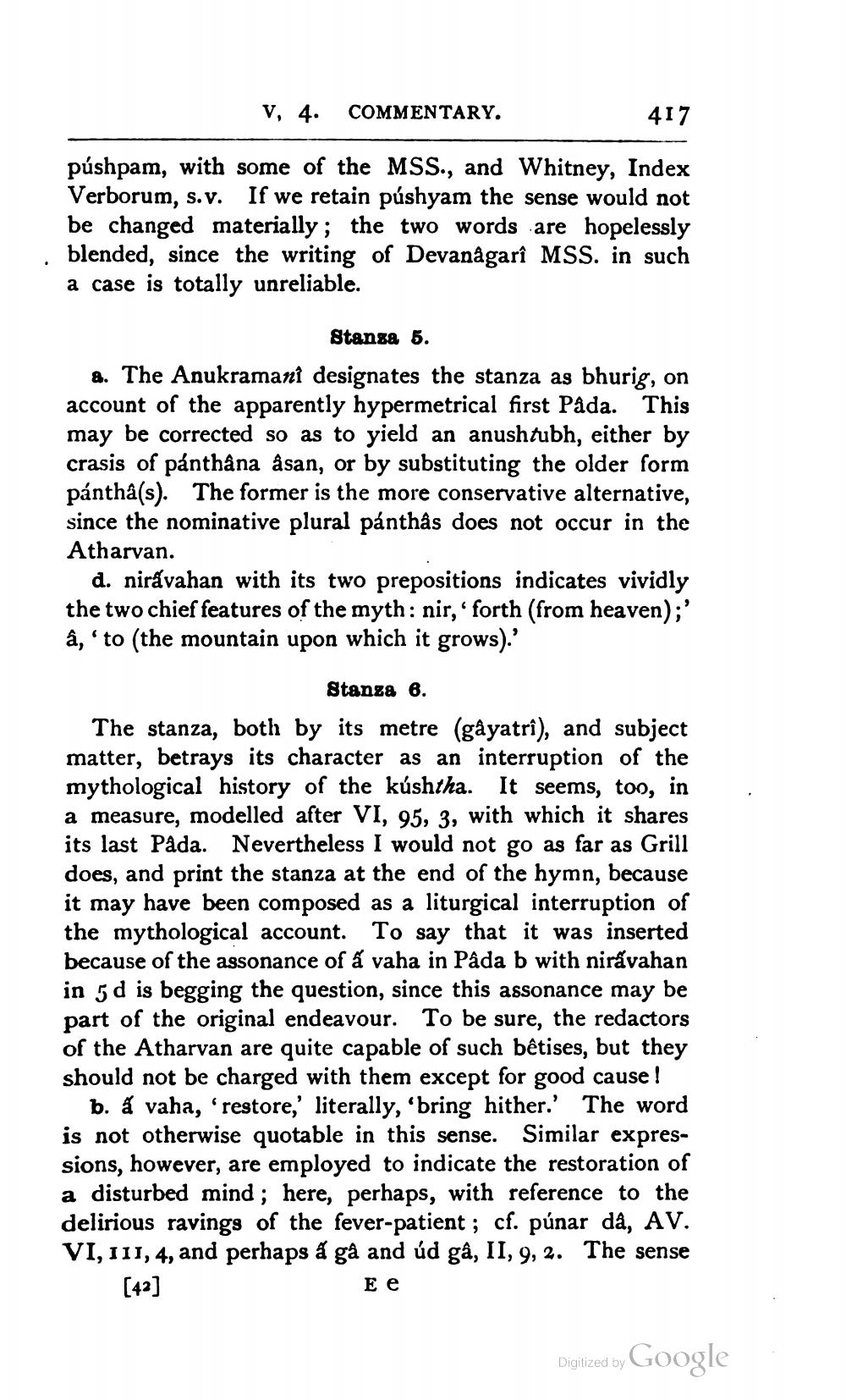________________
V, 4. COMMENTARY.
417
pushpam, with some of the MSS., and Whitney, Index Verborum, s.v. If we retain púshyam the sense would not be changed materially; the two words are hopelessly blended, since the writing of Devanagarî MSS. in such a case is totally unreliable.
Stanga 5. a. The Anukramani designates the stanza as bhurig, on account of the apparently hypermetrical first Pada. This may be corrected so as to yield an anushtubh, either by crasis of pánthâna åsan, or by substituting the older form pántha(s). The former is the more conservative alternative, since the nominative plural pánthås does not occur in the Atharvan.
d. niravahan with its two prepositions indicates vividly the two chief features of the myth: nir," forth (from heaven);' â,'to (the mountain upon which it grows).'
Stanza 6. The stanza, both by its metre (gayatrî), and subject matter, betrays its character as an interruption of the mythological history of the kúshtha. It seems, too, in a measure, modelled after VI, 95, 3, with which it shares its last Påda. Nevertheless I would not go as far as Grill does, and print the stanza at the end of the hymn, because it may have been composed as a liturgical interruption of the mythological account. To say that it was inserted because of the assonance of a vaha in Pâda b with nirávahan in 5 d is begging the question, since this assonance may be part of the original endeavour. To be sure, the redactors of the Atharvan are quite capable of such bêtises, but they should not be charged with them except for good cause !
b. á vaha, 'restore,' literally, 'bring hither.' The word is not otherwise quotable in this sense. Similar expressions, however, are employed to indicate the restoration of a disturbed mind; here, perhaps, with reference to the delirious ravings of the fever-patient ; cf. púnar då, AV. VI, 111, 4, and perhaps a gå and úd gå, II, 9, 2. The sense [42]
Ee
Digitized by
Digjized by Google




